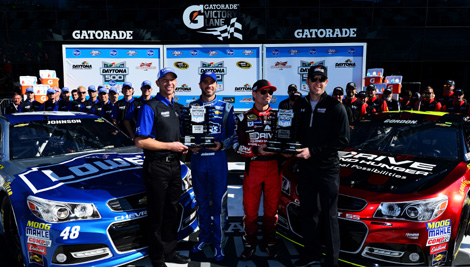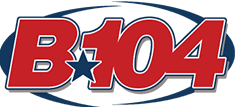(Photo courtesy of NASCARmedia.com/295278Jared C. Tilton/Getty Images)
The Daytona 500 is NASCAR’s biggest race and it kicks off the 36 races that make the Sprint Cup series circuit. Qualifying for the Daytona 500 is different from any other race.
If you are new to NASCAR or perhaps just never bothered to try to figure out how the Budweiser Duels are used to set the starting grid for the Daytona 500, let me try to give you a basic explanation of how it works.
The front row for the Daytona 500 is set with the qualifying that takes place the Sunday before the race. This year was the first year that the group qualifying was used for the front row qualifying for the Daytona 500. Jeff Gordon locked himself into the pole position with Jimmie Johnson locking down the other spot in the front row last Sunday (2/15) in the qualifying.

(Photo courtesy of NASCARmedia.com/304938Robert Laberge/NASCAR via Getty Images)
That qualifying is used to set the starting grids for the Budweiser Duels that will take place tomorrow at Daytona International Speedway to set the rest of the starting grid for the Daytona 500. All of the cars that participated in the qualifying on Sunday were ranked based on their fastest time around the track.
Thursday evening (2/19) there will be two Budweiser Duels. The first duel will include all the cars that were ranked in a qualifying position with an odd number (1,3,5,7, etc.). The cars will be lined up based on their qualifying rank and race 60 laps (150 miles). The cars will then earn their starting position on the inside row (odd numbered starting spots) in the Daytona 500 based on the order they finish the first Budweiser Duel.
The second Budweiser Duel Thursday evening will consist of the cars that qualified with an even numbered ranking (2,4,6, etc.). Those cars will participate in the 60 lap (150 mile) race to earn their spot on the outside row (even numbered starting spots) for the Daytona 500 based on their finish in the second Budweiser Duel.
The Budweiser Duels will set starting spots three through 32 since the front row (spots one and two) are already locked for Jeff Gordon and Jimmie Johnson. That means the top 15 cars from each duel will have earned their spot on the starting grid for Sunday’s (2/22) race.
Positions 33, 34, 35 and 36 for the Daytona 500 will be awarded to the four fastest drivers that did not earn a spot in the Duels.
The next six starting positions (37, 38, 39, 40, 41 and 42) are provisional starting positions. These spots are filled by drivers based on car owner points from the 2014 Sprint Cup season. The highest six cars in those points from the end of last year that have not earned a spot on the starting grid will be placed in these spots from highest in the points (spot 37) to the lowest (spot 42).
The final spot (43) will be awarded to the most recent Sprint Cup Champion that has not earned a spot on the starting grid through any of the previous methods. If there is not a previous champion that needs the last spot to get in the race that spot becomes a seventh provisional spot based on 2014 owner points.
The Daytona 500 has the most complicated qualifying process and requires drivers to race their way to the best starting spots. That is just one of the reasons why this race is the biggest of the year for drivers and owners. That also makes it the biggest race of the year for the fans.
I hope my explanation helps you understand the qualifying process for the Daytona 500.
By: Buck Stevens






